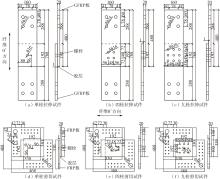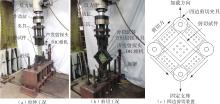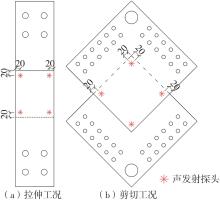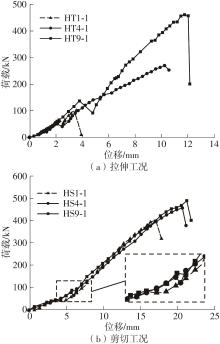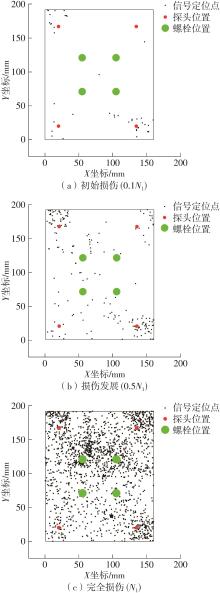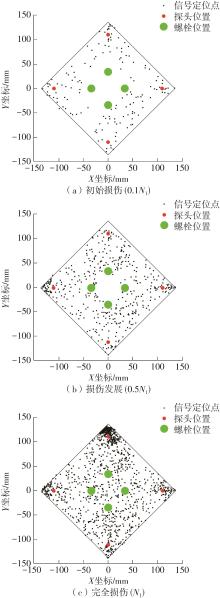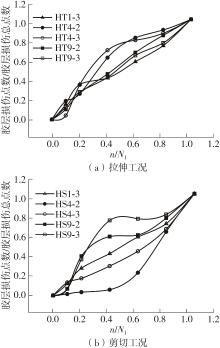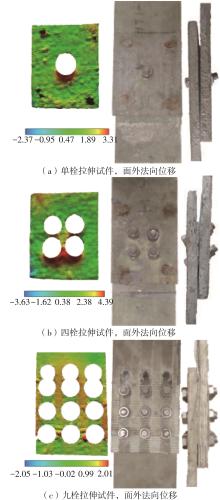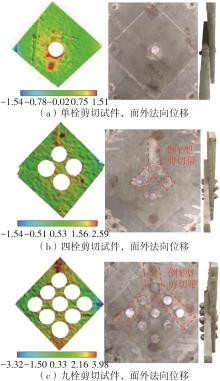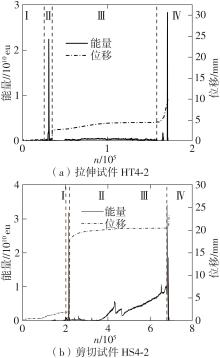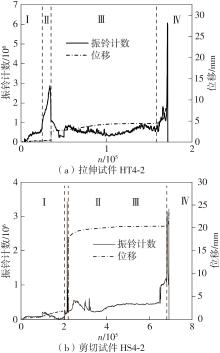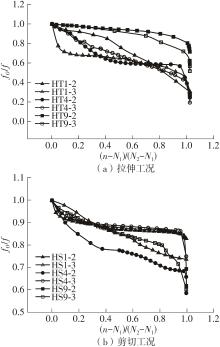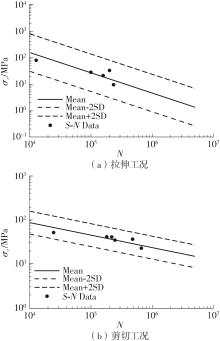| 1 |
韩小雷, ZOU X W,季静 .纤维增强塑料(FRP)在混凝土结构中的应用——FRP材料性能与发展 [J].华南理工大学学报(自然科学版),2002,30(2):69-72.
|
|
HAN Xiaolei, ZOU X W, JI Jing .Fibre reinforced plastics(FRP)used in concrete structures:properties and development [J].Journal of South China University of Technology(Natural Science Edition),2002,30(2):69-72.
|
| 2 |
ABDELKERIM D, WANG X, IBRAHIM H A,et al .Static and fatigue behavior of pultruded FRP multi-bolted joints with basalt FRP and hybrid steel-FRP bolts [J].Composite Structures,2019,220(7):324-337.
|
| 3 |
初明越,阳玉球,赵德方,等 .接头尺寸对玻璃纤维/热塑性树脂复合材料机械连接性能的影响 [J].复合材料学报,2019,36(6):1153-1163.
|
|
CHU Mingyue,YANG Yuqiu,ZHAO Defang,et al,Effect of joint dimension on the mechanically fastened joint properties of glass fiber/ thermoplastic resin composites [J].Acta Material Composite Sinica,2019,36(6):1153-1163.
|
| 4 |
杨显昆,郑锡涛,成李南,等 .复合材料层合板单钉双剪连接挤压强度的一种工程估算方法 [J].复合材料学报,2012,29(6):225-229.
|
|
YANG Xiankun,ZHENG Xitao,CHENG Linan,et al,An engineering approach to predict the bearing strength of single-bolted double-lapped joint in composite laminate [J].Acta Material Composite Sinica,2012,29(6):225-229.
|
| 5 |
李想,谢宗蕻 .复合材料多钉连接钉载分配均匀化的泰勒展开方法 [J].哈尔滨工业大学学报,2019,51(11):108-115.
|
|
LI Xiang, XIE Zonghong .A Taylor Expansion algorithm for the load distribution homogenization ofmulti-bolt composite joints [J].Journal of Harbin Institute of Technology,2019,51(11):108-115.
|
| 6 |
KHASHABA U A, SALLAM H, AL-SHORBAGY A E,et al .Effect of washer size and tightening torque on the performance of bolted joints in composite structures [J].Composite Structures,2006,73(3):310-317.
|
| 7 |
SEN F, PAKDIL M, SAYMAN O,et al .Experimental failure analysis of mechanically fastened joints with clearance in composite laminates under preload [J].Materials & Design,2008,29(6):1159-1169.
|
| 8 |
黄文俊,程小全,武鹏飞,等 .复合材料混合连接结构拉伸性能与影响因素分析[J].北京航空航天大学学报,2013,39(10):1408-1413.
|
|
HUANG Wenjun,CHENG Xiaoquan,WU Pengfei,et al,Analysis on tensile properties and influence factors of composite hybrid joints [J].Journal of Beijing University of Aeronautics and Astronautics,2013,39(10):1408-1413.
|
| 9 |
LIU L, WANG X, WU Z,et al .Tension-tension fatigue behavior of ductile adhesively-bonded FRP joints [J].Composite Structures,2021,268:113925.
|
| 10 |
LIU L, WANG X, WU Z,et al .Resistance and ductility of FRP composite hybrid joints [J].Composite Structures,2021,255:113001.
|
| 11 |
李曙光 .FRP构件的连接及其设计方法研究 [D].西安:西安建筑科技大学,2012.
|
| 12 |
ZHANG H, ZHANG L, LIU Z,et al .Numerical analysis of hybrid(bonded/bolted)FRP composite joints:A review [J].Composite Structures,2021,262(2):113606.
|
| 13 |
KIM K S, YOO J S, YI Y M,et al .Failure mode and strength of uni-directional composite single lap bonded joints with different bonding methods [J].Composite Structures,2006,72(4):477-485.
|
| 14 |
SARKANI S, MICHAELOV G, KIHL D P,et al .Stochastic fatigue damage accumulation of FRP laminates and joints [J].Journal of Structural Engineering,1999,125(12):1423-1431.
|
| 15 |
KELLY G .Quasi-static strength and fatigue life of hybrid(bonded/bolted)composite single-lap joints [J].Composite Structures,2006,72(1):119-129.
|
| 16 |
HOANG-NGOC C, PAROISSIEN E .Simulation of single-lap bonded and hybrid(bolted/bonded)joints with flexible adhesive [J].International Journal of Adhesion and Adhesives,2010,30(3):117-129.
|
| 17 |
CHOWDHURY N M, CHIU W K, WANG J,et al .Experimental and finite element studies of bolted,bonded and hybrid step lap joints of thick carbon fibre/epoxy panels used in aircraft structures [J].Composites Part B:Engineering,2016,100:68-77.
|
| 18 |
CHOWDHURY N M, WANG J, CHIU W K,et al .Static and fatigue testing bolted,bonded and hybrid step lap joints of thick carbon fibre/epoxy laminates used on aircraft structures [J].Composite Structures,2016,142:96-106.
|
| 19 |
孟超,彭卫东,宁小波,等 .玻璃纤维复合材料损伤过程的声发射特性研究 [J].复合材料科学与工程,2016(12):23-27.
|
|
MENG Chao,PENG Weidong,NING Xiaobo,et al,Study on acoustic em`ission characteristics of damage process of glass fiber composites [J].Composite Science and Engineering,2016(12):23-27.
|
| 20 |
李昕,康正亮,胥凯晖,等 .GFRP不同损伤情况下声发射检测信号特征研究 [J].南昌航空大学学报(自然科学版),2016,30(4):75-81.
|
|
LI Xin,KANG Zhengliang,XU Kaihui,et al,Characteristics research for acoustic emission testingsignal of different damage of GFRP [J].Journal of Nanchang Hangkong University(Natural Sciences),2016,30(4):75-81.
|
